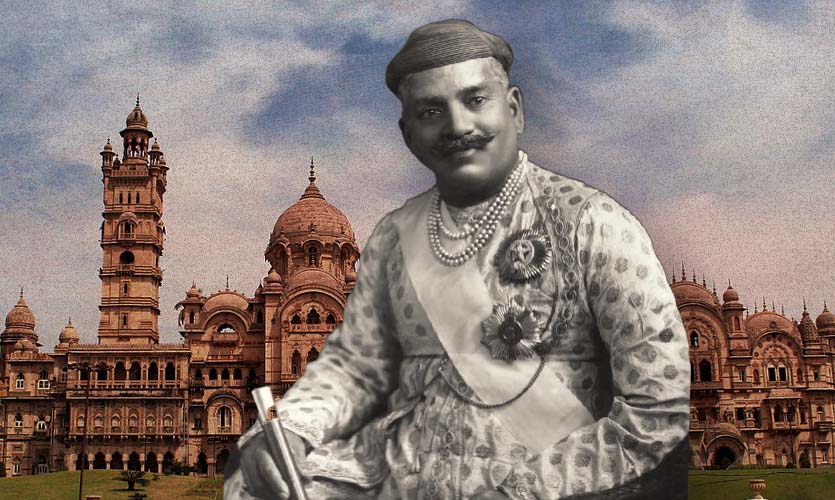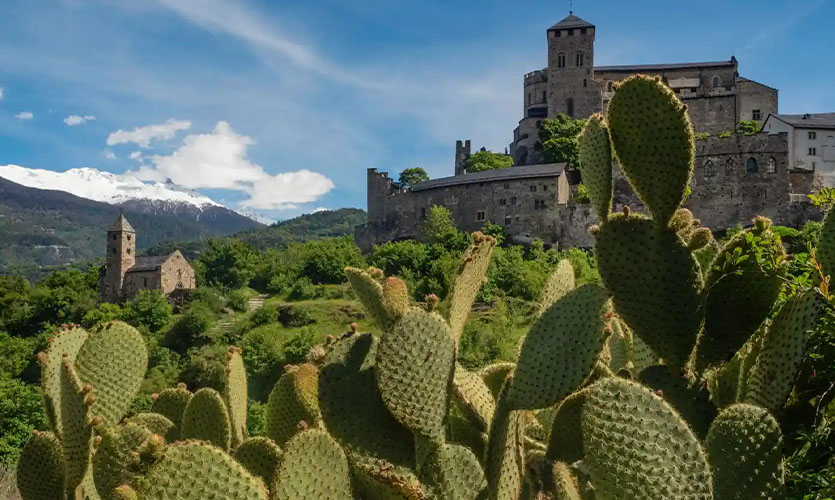Vadodara, a city offering indefinite choices in Bandhanis and Patolas, savoury khakras and gathiyas, is so much more than just that. Before it became ‘Baroda’, it was Maharaja Sayajirao Gaekwad III’s Sayaji Nagari, the city of culture.
In the backdrop of the cruelty imposed by the British Raj, Sayajirao Gaekwad’s rule was a progressive streak that transformed and modernised Baroda ahead of its time.
Growing up in Baroda as a Maharashtrian, the influence of the Gaekwad dynasty on the city and the indelible mark they left on some of my favourite places like Kamati Baug and the Laxmi Vilas Palace Museum had always intrigued me. As I dug deeper, my fascination for the city and these places only seemed to grow.
History has honoured rulers for their valour and bravery in many a battle. But, Sayajirao’s rule was different. Baroda flourished under the Gaekwad dynasty and reached the peak of development through social reforms.
But how did a Maratha ruler come to ascend a throne in Gujarat?
From Kavlana’s Gopalrao to Baroda’s Sayajirao
Baroda was yearning for a suitable successor after Sir Khanderao Gaekwad’s death, and thus, his widow Jamnabai called upon the extend members of the family and their heirs to present themselves to decide upon a ruler of Baroda.
“I have come here to rule,” said a steadfast and determined Gopalrao Gaekwad when asked about his intent behind walking from Kavlana to Baroda with his brothers.
The 18-year-old was adopted by Jamnabai, named ‘Sayajirao’ when he ascended the throne, and thus, Baroda had a new ruler. The prince-in-training was still a minor who had invited a load of responsibilities on his little shoulders. Toeing the line with his Gujarati subjects being a Maratha, and maintaining diplomacy while dealing with the British was no cakewalk.
Sayaji Nagari
On his worldly travels, the Maharaja took notes and the impact of these observations helped him widen his own thinking, which in turn had a beneficial influence on his empire. This, supplemented with education provided by Raja Sir T Madhava Rao and Sir Elliot, moulded Sayajirao into an able king who prioritised the welfare of his subjects. Hence, the Maharaja embraced liberal ideas with open arms.
As a pioneer of social change, his reforms included, a ban on child marriage, legislation on divorce, removal of untouchability and granting inheritance rights to married and widowed women. Maharaja Sayajirao initiated community feasts called ‘sahabhojan’ for all castes in a move against discrimination.
Notably, he advocated for the education and upliftment of women, children and the lower classes by setting up free dormitories and education for students from the so-called ‘untouchable’ tribal class. Additionally, he promoted women’s education and established a facility for female athletes. He established a number of development programmes such as village panchayats in every village, ensured literacy of gram panchayat members, and set up libraries in every village.
In a bid to educate his subjects, in 1906, Sayajirao made primary education free and compulsory in all regions of his state. Moreover, he offered agro-industry-focused courses to students from farming backgrounds.
The wave of literacy engulfed Baroda as the number of schools in the Maharaja’s state went up three times just within a decade of his rule. Education and reform sparked the Library Movement across the state, with people wanting to get enlightened on various subjects like Sanskrit, ideological studies, and religious education.
Maharaja Sayajirao established the Baroda Central Library by donating 20,000 books as a ‘seed’ collection, which only grew in the coming years. What started as one of the first public libraries in India, grew to be around 1500 within the state itself. Even when it came to the library, Gaekwad was inspired by foreign librarian William Alanson Borden. Together with other planners, he planned the library with state of the art technology for fire systems and systematic stacking of books. Started by the collection of the Maharaja himself, today it is an aesthetic haven for book lovers across the city, and the perfect library to curl up in a corner.
Surprisingly, Sayajirao’s quest for development and modernisation did not stop there. Attracting students from all walks of life, Maharaja Sayajirao University is a prized institution of Baroda. The Maharaja laid the foundation of the institute in 1881 as the Baroda College of Science, which has now expanded to branches of Commerce and Arts as well. His efforts turned fruitful when MSU was finally established post-independence. He granted a major sum of money to the university from his personal and state funds, and achieved his life-goal to educate the people of his state.
The campus is noticeable from outside, making it easy for one and all to be completely lost in its rustic beauty. To think that it educated thousands of students at a time when resources were limited, definitely makes you reflect on Maharaja’s philosophies and how they live on till date through the university and its teachings.
A Taste Of Luxury And The Arts
Maharaja Sayajirao had more layers to him other than being a devoted ruler. He had an eye for architecture, arts, dance, and music, and widely celebrated it all.
Sayajirao is known to have possessed a magnificent collection of jewellery and gems, including the “Star of the South” diamond, the “Akbar Shah” diamond, and the “Princess Eugenie” diamond.
Baroda blossomed into a haven for artists and philosophers under his rule. Renowned artist Raja Ravi Varma was one of those who frequently visited his palace. Musicians, dancers and poets often graced the royal court for special occasions. Sayajirao’s wife Chimnabai I, who was adept in Bharatanatyam and Carnatic music, also brought with her a troupe of skilled dancers to Baroda.
The Laxmi Vilas Palace, is one such Indo-Saracenic Revival architectural marvel that reflects Maharaja’s royal taste. Dotted with marble and bronze sculptures, embedded lush green gardens of mango orchads and a sprawling golf course makes quite a statement. The palace is supposedly four times the size of the Buckingham Palace!
The Laxmi Vilas Palace Museum is where all the magic comes alive. The timeless stories of the Gaekwad family are frozen in the paintings there. Walking through its hallways after knowing the history of the Maharaja makes you feel a part of this beautiful shared history, and transports you to Sayajirao’s Baroda.
A cattle-grazer turned king, Sayajirao was truly an exemplary leader whose life teaches significant lessons. He was indeed way ahead of his time, and pushed Baroda to the heights of modernisation without compromising on his Indian roots. The city and the Indian culture is indebted to him for his patronage of arts and architecture.
Somehow, Maharaja Sayajirao Gaekwad managed to tie the cultures of Gujarat and Maharashtra into only one goal – the development of Baroda.
Read more: Amer Fort, An Architectural Remnant of Indo-Mughal Ties










